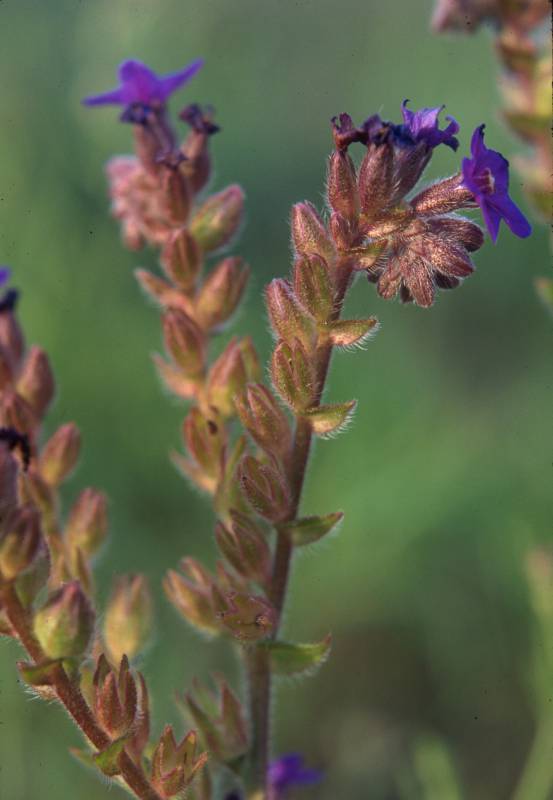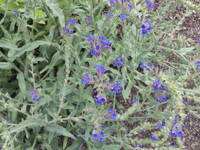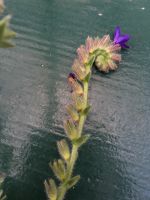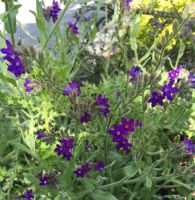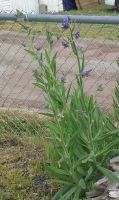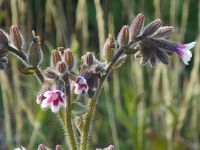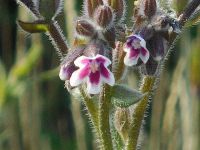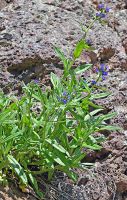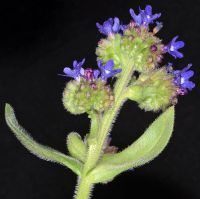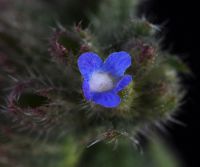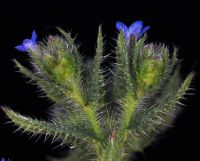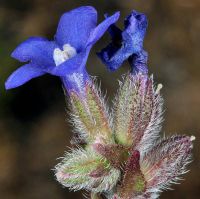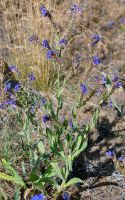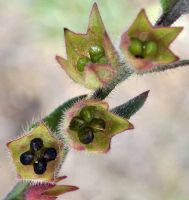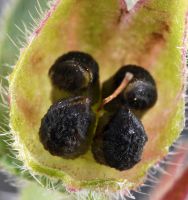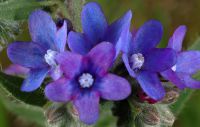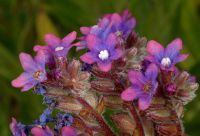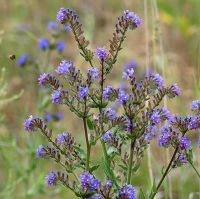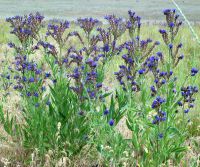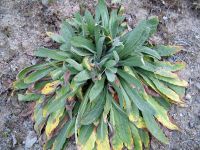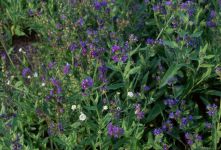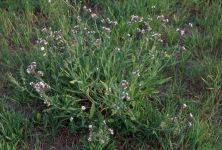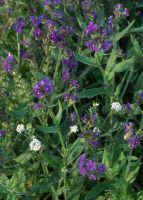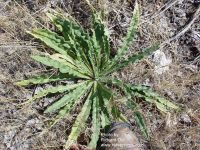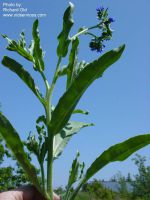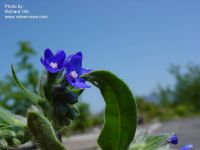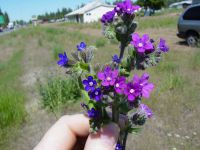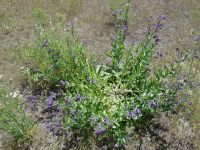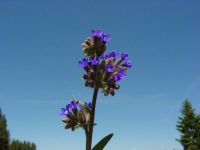Distribution: Occurring in scattered locations on both sides of the Cascades crest in Washington; British Columbia to California, east to Rocky Mountains and northern Great Plains, also from the Great Lakes region to northeastern North America.
Habitat: Roadsides, fields, ditches, wastelots, and other disturbed, open areas at low elevations.
Flowers: May-July
Origin: Introduced from Mediterranean region
Growth Duration: Biennial, Perennial
Conservation Status: Not of concern
Pollination: Bees, flies
Taprooted perennial, the several stems 3-8 dm. tall; herbage with spreading hairs throughout.
Lower leaves oblanceolate, petiolate, 6-20 cm. long and 1-2.5 cm. wide; other leaves gradually reduced, becoming sessile and lanceolate.
Flowers in terminal, helicoid, bracteate false racemes which elongate and straighten with age, the bracts lance-triangular; calyx 5-7 mm. long, the 5 lobes lanceolate, about equaling the tube; corolla blue-purple, 6-11 mm. long, the limb 6-11 mm. wide, the 5 lobes rounded.
Nutlets 4, wrinkled, 2 mm. high, with a basal projection that fits into a pit in the receptacle.
Publication: Sp. Pl. 1: 133. 1753.
PNW Herbaria: Specimen records of Anchusa officinalis in the Consortium of Pacific Northwest Herbaria database.
WA Flora Checklist: Anchusa officinalis checklist entry.
OregonFlora: Anchusa officinalis information.
E-Flora BC: Anchusa officinalis atlas page.
CalPhotos: Anchusa officinalis photos.
USDA Plants: Anchusa officinalis information.



